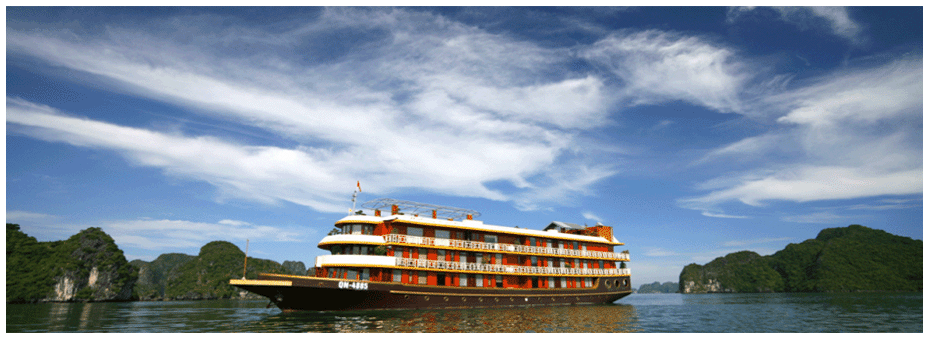The bay consists of a dense cluster of
over 3,000 limestone monolithic islands (although locals claim there are
only 1,969 as this is the year of Ho Chi Minh’s death), each topped
with thick jungle vegetation, rising spectacularly from the ocean.
Several
of the islands are hollow, with enormous caves. Hang Đầu Gỗ (Wooden
stakes cave) is the largest grotto in the Hạ Long area. French tourists
visited in the late 19th century, and named the cave Garotte eds
Versailles. Its three large chambers contain large numerous stalactites
and stalagmites (as well as 19th century French graffiti). There are two
bigger islands, Tuần Châu and Cat Ba, that have permanent inhabitants.
Both of them have tourist facilities including hotels and beaches. There
are a number of beautiful beaches on the smaller islands.
Some of the islands support floating
villages of fishermen, who ply the shallow waters for 200 species of
fish and 450 different kinds of mollusks. Many of the islands have
acquired their names as a result of interpretation of their unusual
shapes. Such names include Voi Islet (elephant), Ga Choi Islet (fighting
cock), and Mai Nha Islet (roof). 989 of the islands have been given
names. Birds and animals including bantams, antelopes, monkeys, and
lizards also live on some of the islands.
Almost all these islands are as
individual towers in a classic feeling landscape with heights from 50m
to 100m, and height/width ratios of up to about six.
Another specific feature of Halong Bay
is the abundance of lakes inside the limestone islands. For example, Dau
Be island has six enclosed lakes. All these island lakes occupy drowned
do lines within fencing karts








